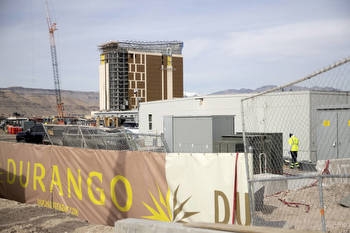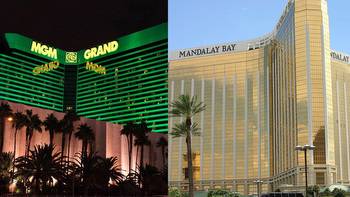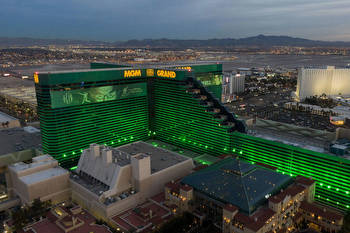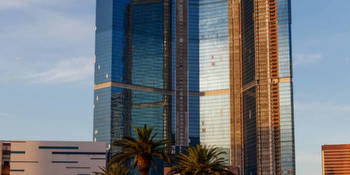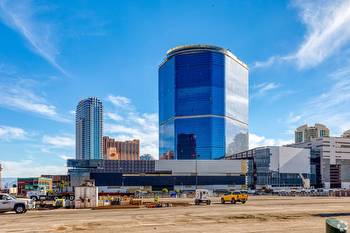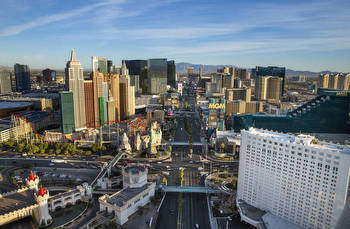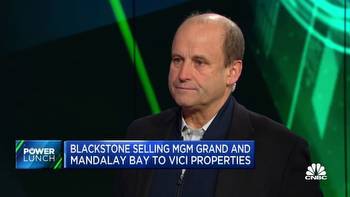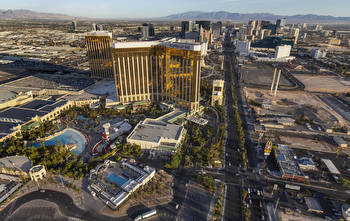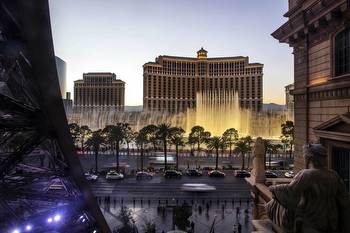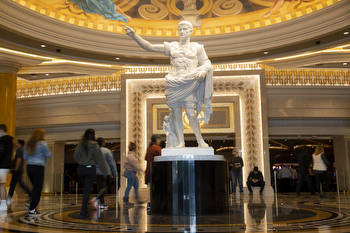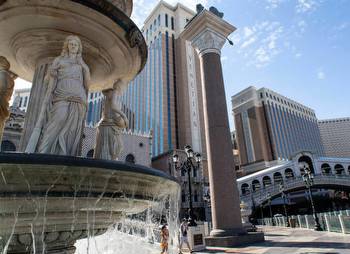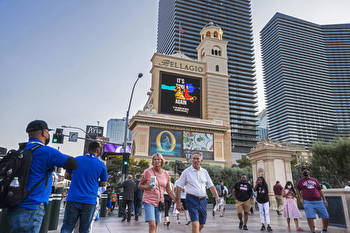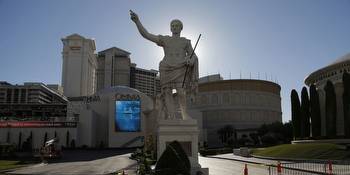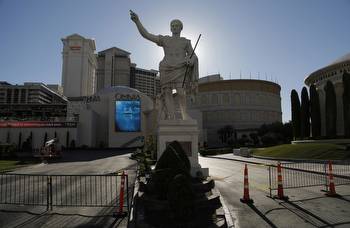Fontainebleau Las Vegas bankrolled by big casino landlords

Over the past few years, two firms have shelled out billions of dollars for casino real estate along the Strip.
Now they are plowing a fortune into a long-planned resort with a tumultuous history: the Fontainebleau.
Last month, developers of Fontainebleau Las Vegas announced they secured a $2.2 billion construction loan to finish the towering hotel-casino. The group of lenders includes casino landlord Vici Properties, which said it’s putting up to $350 million into the deal, and financial giant Blackstone, which is spending $500 million, according to people familiar with the matter.
The 67-story Fontainebleau is scheduled to open in the fourth quarter this year, almost two decades after Florida developer Jeffrey Soffer initially unveiled plans for the resort in 2005.
Its completion would be nothing short of a miracle, given the Fontainebleau’s journey through bankruptcy proceedings, halted construction, different sets of owners, national economic meltdowns and years of guessing what might happen with the unfinished skyscraper on the north Strip.
Its path to opening has now received a major boost from Vici and Blackstone — two New York companies that have emerged as the Strip’s dominant casino landlords.
The right direction
In a full-circle moment, Soffer teamed with conglomerate Koch Industries’ real estate wing to reacquire the property in early 2021. Construction resumed more than a year ago, and the site boasts 3,700 workers.
Brett Mufson, president and partner at Soffer’s firm Fontainebleau Development, told me the developers are ahead of schedule and construction is going “very smoothly.”
He said Las Vegas has been “extraordinarily resilient” amid the wobbly U.S. economy, and he noted Vici and Blackstone have deep pockets and deep knowledge of the market.
As Mufson sees it, their involvement with the Fontainebleau is a “huge rubber stamp that we’re headed in the right direction.”
Vici Chief Financial Officer David Kieske said in an email the company is “very excited to participate in the Fontainebleau financing and continue our track record of investing into Las Vegas.”
Michael Eglit, head of U.S. originations for Blackstone’s real estate debt strategies group, said in a statement the firm is “pleased that our capital will enable the completion of a fantastic addition” to the Strip that will “draw visitors and create thousands of new jobs.”
The deal also expands Vici and Blackstone’s already massive footprints on Las Vegas Boulevard.
Spending spree
In 2019, Blackstone purchased Bellagio’s real estate from MGM Resorts International for $4.2 billion and leased it back to the casino giant. In 2020, it partnered with MGM’s real estate spinoff on a $4.6 billion deal to acquire MGM Grand and Mandalay Bay and leased the properties back to MGM.
And in 2021, Blackstone bought Aria and Vdara from MGM for nearly $3.9 billion and leased them back.
Blackstone also still owns a stake in The Cosmopolitan of Las Vegas’ real estate. It purchased the flashy hotel-casino for $1.73 billion in 2014 and sold it for $5.65 billion in a deal that closed last year.
Vici was spun off from Caesars Entertainment in 2017. By all appearances, it’s now the biggest property owner on the Strip.
The firm vastly expanded its holdings with the $17.2 billion buyout of MGM’s real estate spinoff. As part of the deal, which closed last year, Vici acquired several MGM Resorts-operated properties along the Strip including The Mirage, Park MGM, New York-New York, Luxor and Excalibur.
It also acquired the spinoff’s stake in MGM Grand and Mandalay Bay. Last month, Vici announced it was taking full ownership of the two properties, saying it would pay Blackstone nearly $1.3 billion in cash and assume the firm’s share of debt on the resorts.
This high-priced real estate shuffle has resulted in little, if any, visible effects for customers. But with their newest deal, Vici and Blackstone are helping achieve what many locals thought would never happen: the completion of the Fontainebleau.









